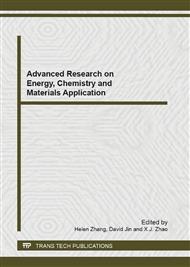p.313
p.317
p.321
p.325
p.330
p.334
p.338
p.342
p.346
Research on Biological and Mechanical Modification of Pulp to Improve the Strength of Paper
Abstract:
By the preceding experiments, we concluded that the optimum conditions for laccase treatment were: the concentration of laccase 16U/g dry pulp, the pulp consistency 5%, temperature 50 °C, pH=5.0 and reaction time 90min. We studied the change of water retention value and carboxyl content changes under the best conditions. As well as we studied the effect of pulp strength properties by biological treatment combined with mechanical treatment. Moreover, environmental scanning microscope images showed that more collapse and more fibrillation were observed on the beating combined with laccasehistidine-treated fiber surface than the control samples, which led to form better bonding between fibers in handsheets resulting in the increase of the paper strength of beating combined with laccasehistidine-treated OCC pulp.
Info:
Periodical:
Pages:
330-333
Citation:
Online since:
November 2013
Authors:
Keywords:
Price:
Сopyright:
© 2014 Trans Tech Publications Ltd. All Rights Reserved
Share:
Citation:


